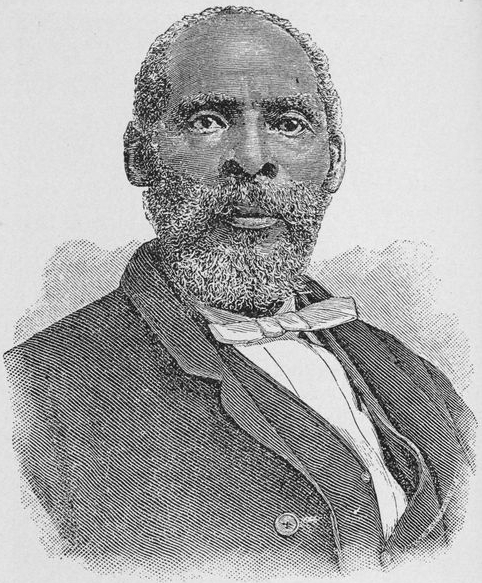 [1]
[1]RICHMOND, Va. – Highway engineers in Virginia designed a combined section of interstates 64 and 95 to curve gently eastward in downtown Richmond to protect a landmark that serves as a memorial to one of America’s greatest preachers – John Jasper.
“You can’t tear down that church,” people insisted when the interstates were being designed in the late 1950s. “That’s John Jasper’s church.”

As a result, Sixth Mount Zion Baptist Church, founded in 1867 by former slaves, still stands today with its strikingly beautiful Gothic Revival architecture, complete with high arching windows and a towering belfry, a tribute to a man who devoted his life to preaching the Gospel.
One of Jasper’s contemporaries, William E. Hatcher, a fellow pastor in Richmond, wrote Jasper’s biography, noting his birth as a slave on a Virginia plantation in 1812 and his adventurous life as a preacher sharing the Gospel all over America and beyond.
As a young man, Hatcher wrote, Jasper’s wife was “sold south,” and Jasper was “leased” to a tobacco factory in Richmond. Faced with such heartbreak, Jasper became bitter and, in his grief, rejected God.
Then, at age 27, he discovered God had not rejected him.
As Hatcher described it, for six weeks in 1849, under heavy conviction of his sin, Jasper struggled with the issue of his salvation. Then one July morning while at work stemming tobacco, Jasper’s heart was changed.
“The darkness of death was in my soul that morning,” Hatcher quoted Jasper as saying. “My sins was piled on me like mountains. … I flung up to heaven a cry for mercy. Fore I knowed it the light broke. I was light as a feather. My feet was on the mountain; salvation rolled like a flood through my soul, and I felt as though I could knock off the factory roof with my shouts.”
Hatcher paints a heartwarming account of Jasper, brimming with the joy of newborn salvation, celebrating with his coworkers. He saw a woman who had been praying for him. He went over intending to whisper to her the good news. But, he said, it came out in a shout that could be heard on the far side of the James River.
“After I once opened my mouth it was hard to keep it shut any mo,” Jasper said, the words taken verbatim from the account in Hatcher’s book.
A shouting meeting soon broke out on the factory floor.
“One man said he thought the whole factory was falling down,” Jasper said. “All I know I had raised my first shout to the glory of my Redeemer.”
Hatcher said the factory overseer came out to see what was going on and told them to get back to work.
When factory owner Sam Hargrove heard the commotion, he asked to see Jasper in his office. Jasper told Hargrove what had happened to him. Hargrove got up from his desk to shake hands with Jasper. No white man had ever shaken Jasper’s hand before that day, Hatcher wrote.
“John, I wish you mighty well,” Hargrove told him. “Your Savior is mine, and we are brothers in the Lord.”
Then Hargrove told Jasper to go back to the rest of the floors of the factory and to the shipping dock and tell them what happened.
“You needn’t work anymore today,” a weeping Hargrove told Jasper. “I’m giving you a holiday. … Go everywhere you want and tell the good news.”
Years later, Jasper credited Hargrove, his former master, with helping to get him started in ministry.
Hargrove allowed Jasper time away from the factory because he realized that his Christian brother had an unusual God-given gift.
During the era before the war, many of the plantations in Virginia had preachers, both white and Black, come for one and sometimes several days of preaching each year. It was under the umbrella of having one large funeral for all those on the plantation who had died the previous year. In reality it was more like a camp meeting with the larger community invited.
Hatcher said Jasper began to be invited to preach at these events. He soon began to be recognized for his giftedness in the pulpit. It was also during this time that another slave taught him to read and write so he could study the Bible.
Following the Civil War, at age 55, Jasper became the founding pastor of the Sixth Mount Zion Baptist Church, which began meeting in an old horse barn in 1867. On any given Sunday, a large portion of those gathered were white residents of Richmond. This often included Hatcher who penned Jasper’s biography in 1908.
Hatcher said Jasper preached a sermon in 1878 that he became famous for titled, “Da Sun do Move.” It was a sermon that he preached with such passion and eloquence that it began to be requested near and far, including once by the Virginia General Assembly. Hatcher said Jasper would preach that sermon no less than 250 times across America in the final years of his life. In the process, he became one of the most noted preachers of any race in America of the era.
The beloved Jasper was remembered more than 50 years after his death by the members of his old church when they united in voice to save the building from the wrecking ball.
Today, the rerouted section of the combined interstates serves as testament to beloved preacher.
Jasper contributed to race relations because no one, Black or white, literate or illiterate, could deny that the grace of God had transformed this former slave so that men of all races would hear the Gospel.
Jasper’s life is an important example of what God can do with a redeemed man who recognizes the value of a human soul.
